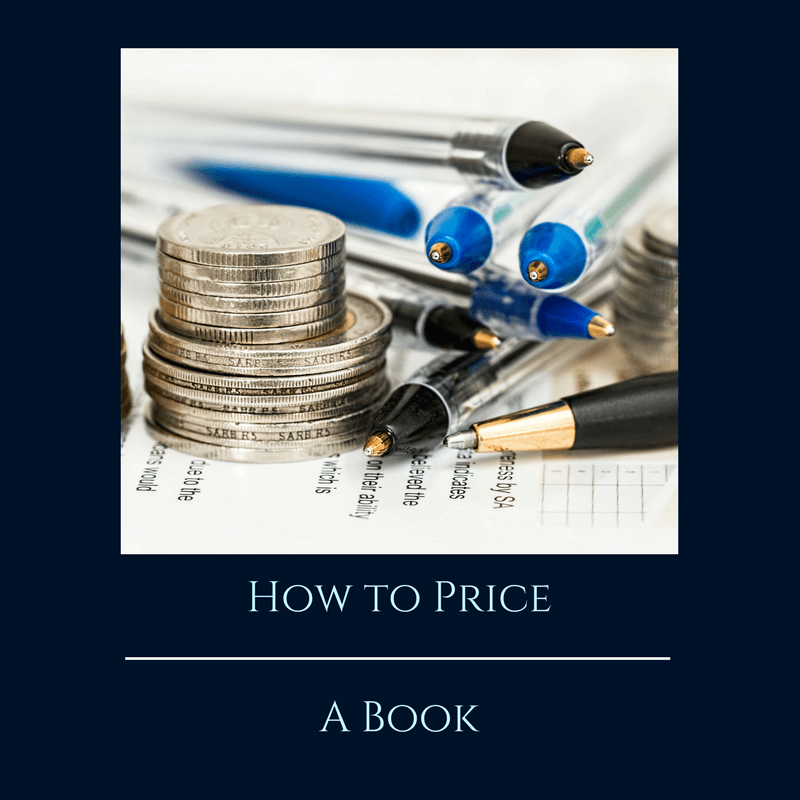Episode 30
A topic that I haven’t covered in detail is pricing your book. In general there is no right answer to the question, “What should I price my book at?”
Setting an eBook Price
There are several rules that are fairly hard and fast, created by Amazon’s pricing structures. For eBooks, you want to charge over $2.99 and under $9.99 if revenue is your main motivator – Amazon pays 70% royalties in the UK and US if you charge a price between these two values. Note that on Kobo and some other retailers the $9.99 limit for higher level royalties doesn’t apply. Sadly the lower royalty rate for cheaper eBooks seems to apply everywhere.
Unless you are running a promotion or trying to encourage people to buy your book as part of a series, then 99 cents is too low.
In terms of eBook pricing, I do actually think that many indie books are under-priced. If you book is a reasonable length (over 80000 words) then I don’t think $4.99 is an unreasonable price. Certainly non-fiction books and much longer fiction books can charge considerably more than this and still seem “reasonably” priced. Many published books have stupidly expensive eBook prices – I saw one for £18 (about $22) the other day!
Setting a Paperback Price
For paperbacks on CreateSpace and Ingram Spark you need to do the maths. Each gives you a formula to calculate how much it costs them to make the book and then you get paid a proportion of the rest as royalties.
Createspace’s royalty structure isn’t very clear – basically there is a fixed cost that is automatically taken off the price and a fee based on the number of pages in the book when calculating royalties. Once this is removed, Createspace take another cut (40% or 60% for expanded distribution) and you get whatever is left over paid to you as royalties.
Selling books via Bookstores – increase the Price
If you are using Createspace’s expanded distribution (I’d recommend you don’t) or Ingram Spark’s distribution and you want your book to be available to stock in Book Stores then you need to factor in a profit margin for the book seller as well. This means you need to charge a price quite considerably higher than the price you would need to break even on Amazon.com alone with. It makes no sense to charge a cheaper price on Amazon, so you need to apply a higher price to your paperbacks in this situation.
One reason most book sellers won’t take Createspace expanded distribution is that the Book stores generally don’t get enough money out of doing this. If you think of it this way, the Book store needs its own royalty to pay for all the costs of stocking the book and make a profit, if possible. Expanded distribution gives the Book Seller 20% to your 40% and Createspace’s 40% of all of the price of the book minus the “fixed costs” that Createspace has already removed.
For Ingram Spark, you can set what “discount” you want to give to the Book Sellers to stock your book. You need to set your price here so that there is enough discount for the Book Sellers (often 50% of the book price) to stock it and enough money left for you to make money and cover the costs from Ingram Spark of selling the book (you do this NOT the bookseller). So if you sell a book for $7.99 then the Book Seller will take 50% of the price of the book ($3.99) leaving you with $4 minus the cost of Ingram Spark printing it (let’s say that is $3.50). So in this case you would end up with 50c!
Ingram have their own calculator for working out what the cost of a book is – use this when working out the price.
As you can see if you stock through a book seller the margins are very tight. This is often why traditionally published books are so expensive.
I hope you found this useful. If you liked this you might like my show on Creating a Paperback Book via Createspace (Episode 4) or Ingram Spark with Andy Bromley (Episode 22)
Learn to Self-Publish an eBook

